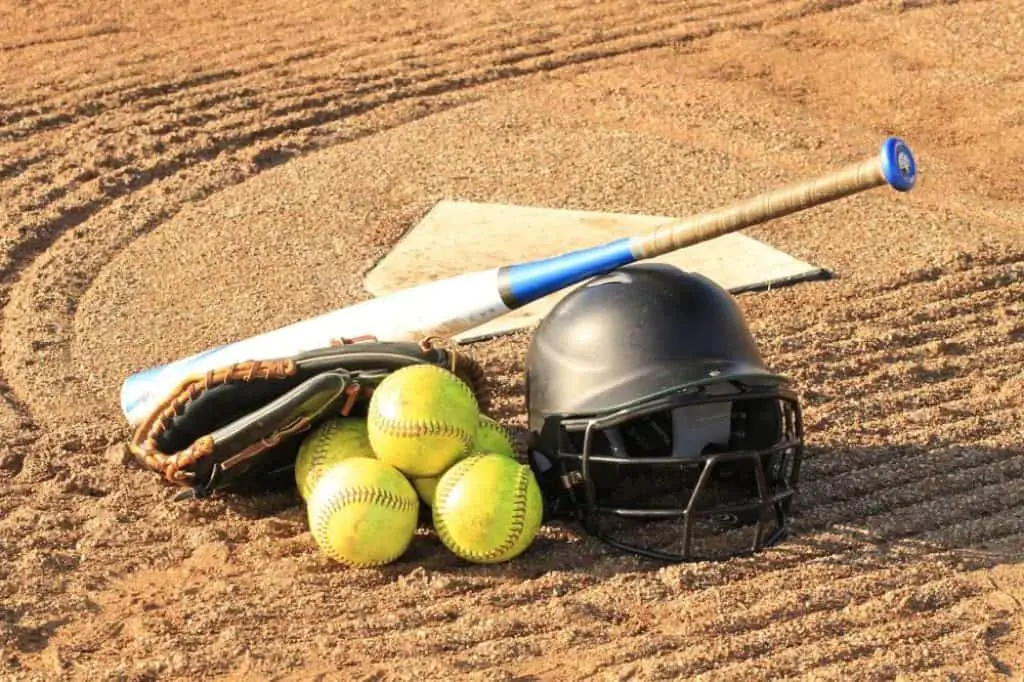What Does AB Mean In Softball? (Answered!)
Softball and numbers go hand in hand. The stats are deeply engrained in softball tradition and are an inseparable part of the game experience.
This stats obsession may sometimes seem a bit intimidating, especially for those just getting acquainted with the game.
Some of the softball statistical categories, especially those modern ones, often seem confusing and complicated.
However, there are stats that are simple to understand and rather self-explanatory.
At Bat is one of the most used stats when evaluating batters and also one of the most common expressions on the softball field.
After a decent plate outing, a batter may often be encouraged with “Nice at bat!” cheers.
However, plenty of softball experts have different opinions on how valuable AB actually is.
Below, I’ll take a closer at this stat, explain what does AB mean in softball, and if it really is as straightforward as it seems.
Table of Contents
What Does AB Mean In Softball Stats?

AB or At Bat is a statistical category indicates how many times an individual batter has been up to bat.
However, unlike Plate Appearances, AB doesn’t include every instance when a batter goes against a pitcher.
A batter is credited with a PA every time he goes to the plate, but he gets an AB to his name only in certain situations.
AB is credited to a batter for plate appearances only when they get a base hit, reach a base on an error or fielder’s choice, and strike out or get out on a non-sacrifice play.
Every other result of a plate outing doesn’t count towards the player’s AB, but more on that later.
To put it in simple terms, AB accounts for every time a batter has appeared on the plate and puts the ball into play with the intention of getting on the base.
What Is Not An At Bat (AB)?
As I already mentioned, in certain situations, a batter may appear on the plate but don’t get rewarded with an AB.
This happens in the following scenarios:
- When a batter hits a sacrifice bunt or a sacrifice fly
- When a batter walks on four balls (receives Base on Balls)
- When a batter is hit by a pitch (PB)
- When a batter get awarded first base due to obstruction or interference (commonly a catcher’s interference)
- When a batter gets replaced by a pinch hitter before their turn at bat is completed. In this case, all statistics related to plate appearance are credited to the pinch hitter. However, if the original batter has two strikes and the pinch hitter completes the strikeout, the AB is awarded to the first batter. If the pinch hitter completes the plate appearance with any other result, they will be credited with that result.
What Is A Good At-Bat (AB) In Softball?

As At Bat points to the number of plate appearances where the batter has managed to put the ball in play, it’s usually a good indicator of trust a coach has in a certain player.
As a rule, batters who bat higher in the hitting order will have higher total AB numbers than those whose turn is towards the bottom.
Also, low AB is a good indicator that a batter walk frequently.
The AB number bats don’t necessarily correlate with how good a certain batter is.
For example, the player with most At Bats in the 2021 season of the NCAA D1 Softball was Brooke Wilmes from Missouri with an AB of 212 in 59 games played.
However, she didn’t even rank in the top 100 players in batting average.
The batter with the best BA in the same season, Kentucky’s Kayla Kowalik finished the season with 202 AB.
What Is Quality At Bat (QAB)?
Quality At Bat, or Good At Bat, is a statistical category that indicates how a certain batter’s At Bat has helped the team.
QAB is not an official softball stat, mainly due to its broad definition and rather subjective nature.
However, it’s a well-known concept for evaluating a batter’s performance.
Still, it can vary from one coach or statistician to another, as they may use different criteria to what is a Quality At Bat.
For example, it may account for how hard the hit was, whether the runner was moved into scoring position, or how many pitches a pitcher had to throw.
How Do You Calculate At Bat?

When you know what constitutes At Bat, AB is a rather simple stat.
The AB is calculated by simply adding together the plate appearance of a batter which resulted in reaching the base on a hit, an error, and on fielder’s choice, or getting called out on the non-sacrifice play.
While it provides limited insight into a batter’s performance, AB is still very valuable as it’s used for calculating Batting Average (BA) and Slugging Percentage (SLG).
Because it specifically measures batter’s contact hitting, At Bat is crucial for determining how well is a batter hitting for average (BA) or how productive they are (SLG).
The AB numbers are also used for calculating several other advanced statistical categories.
Conclusion
Even though it doesn’t provide an overall and comprehensive picture of a batter’s performance, At Bat is still a very useful and important stat.
It’s not as broad as Plate Appearances, but it does indicate how good a certain batter is at putting the ball into play.
However, as with all the other categories, it’s difficult to evaluate a player based just on one stat.
That’s why AB worked best in combination with other batting statistical categories and helps create a complete understanding of how good a batter is.
Besides, as mentioned above, it’s an essential piece of the puzzle when calculating Batting Average and Slugging Percentage, two of the most commonly used batting stats.




